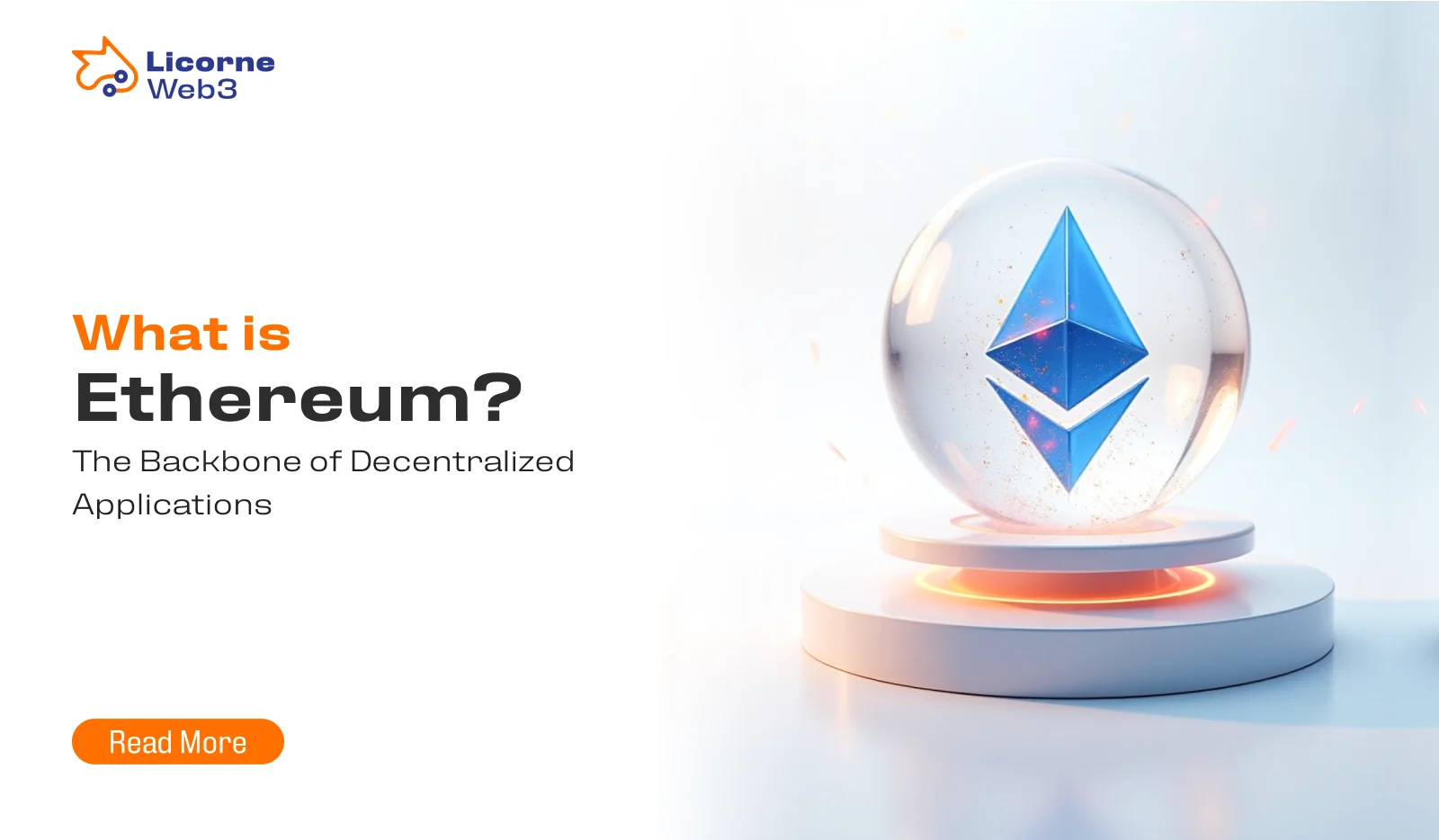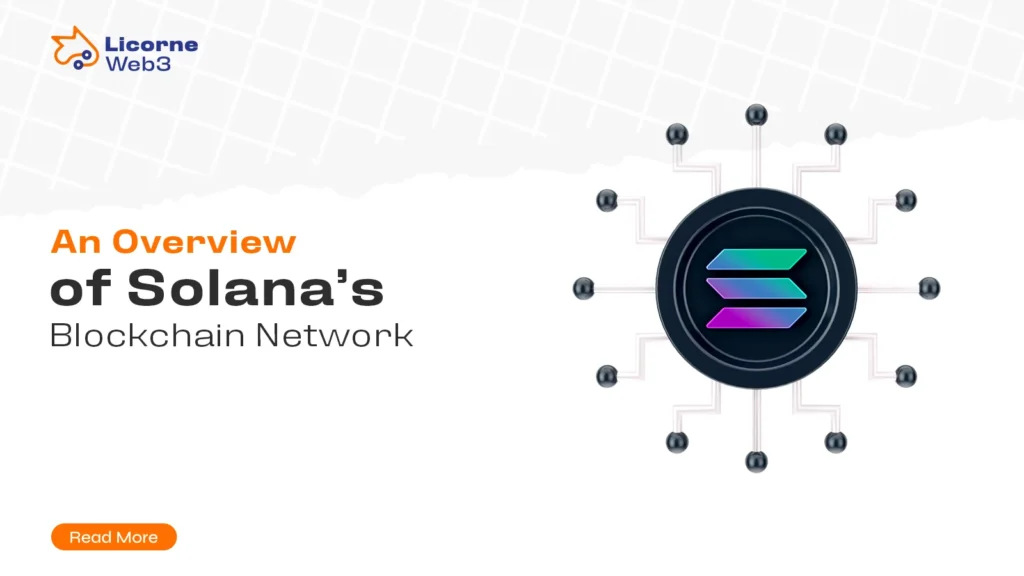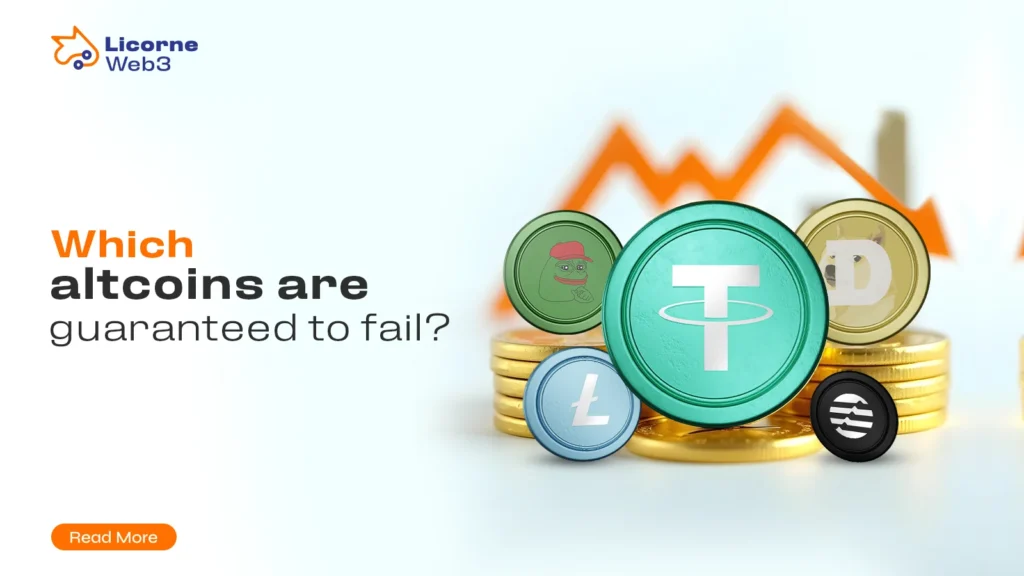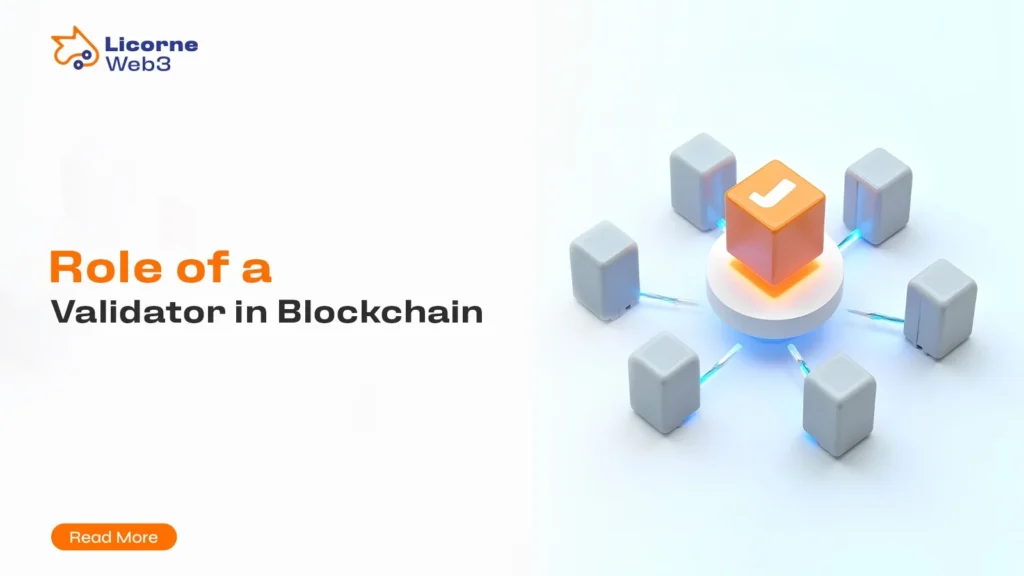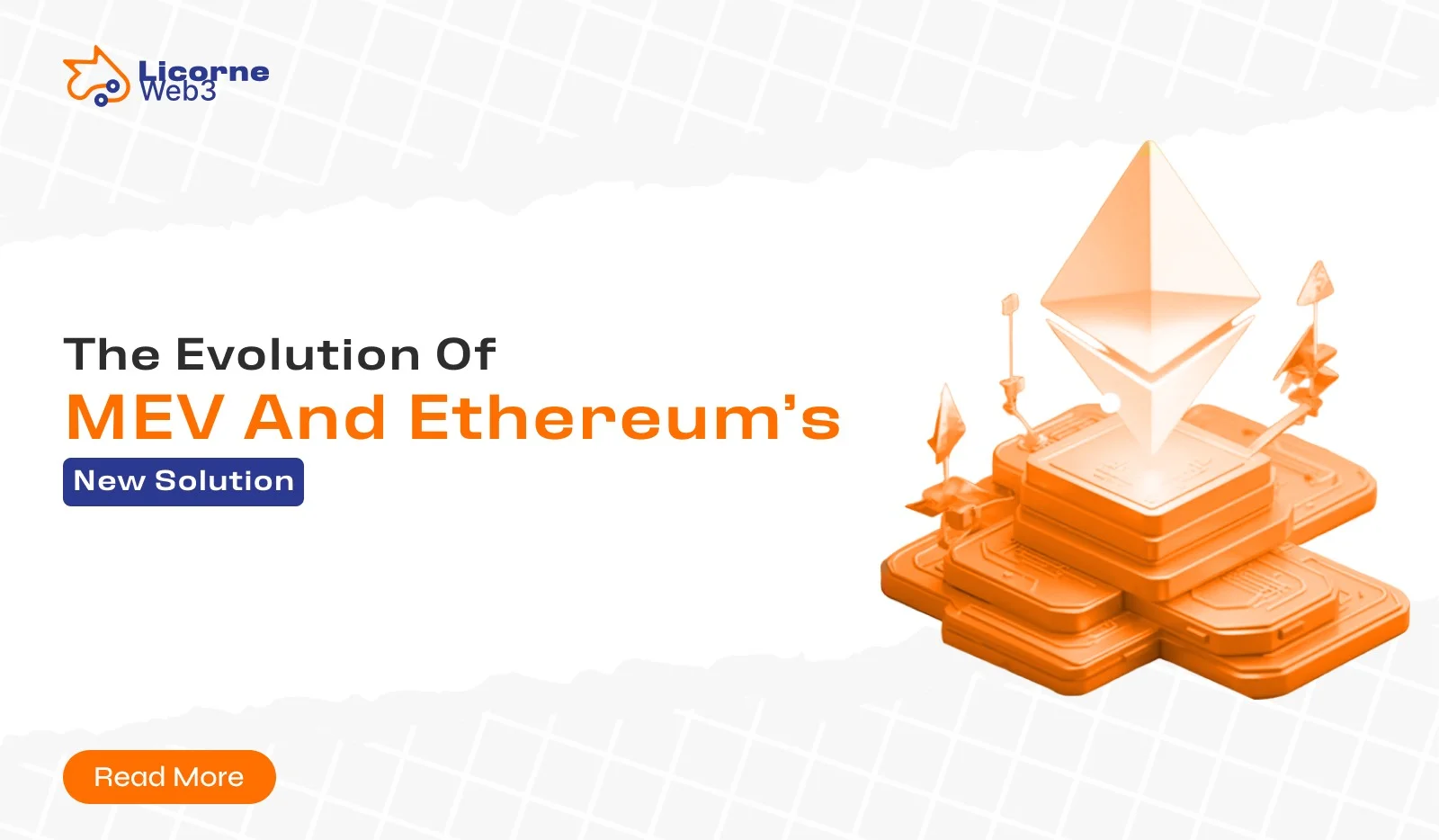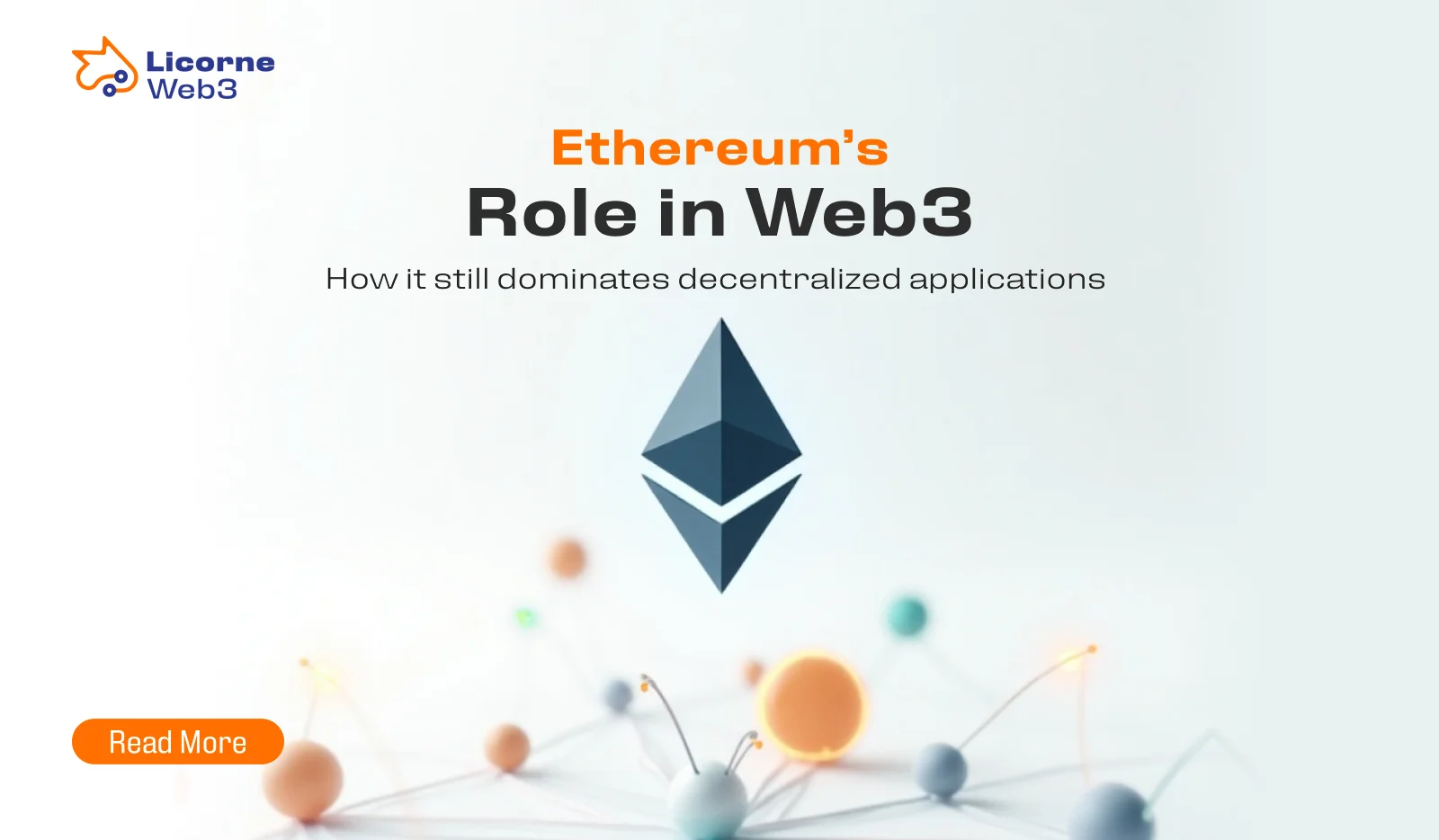Jumping into cryptocurrencies can feel like entering a high-tech adventure.But don’t worry, it’s not as complicated as it sounds! One of the first things you’ll need to understand is Ethereum. Think of Ethereum as the backbone of decentralized applications (DApps), a revolutionary platform that goes beyond the capabilities of Bitcoin.
In this blog, we’ll break down what Ethereum is, why it’s significant, and how it has become the foundation for a new wave of innovative applications. Whether you’re just curious or ready to make your first crypto purchase, we’ve got you covered.Let’s make Ethereum easy-peasy, so you can jump in with confidence!
What is Ethereum?
Ethereum is a decentralized blockchain that allows developers to build and deploy smart contracts and decentralized applications (DApps), revolutionizing the financial system and digital economy. Unlike Bitcoin, which primarily serves as a digital currency, Ethereum operates as a programmable blockchain, functioning like a global computer capable of executing decentralized code.
At its core, Ethereum relies on Ether (ETH), its native cryptocurrency, which is used to pay for transaction fees and computational services on the network. As the second largest cryptocurrency by market capitalization, Ethereum plays a vital role in shaping the decentralized future by enabling trustless financial transactions and eliminating intermediaries. The network operates through a vast network of computers, or nodes, which validate transactions, ensuring network security and transparency. Each transaction is recorded in a block, linking it to the previous block to maintain a secure and immutable ledger.
Ethereum was proposed in late 2013 by Vitalik Buterin, who recognized Bitcoin’s limitations and envisioned a more flexible digital system for decentralized applications. In 2014, Ethereum’s development was crowdfunded through an initial coin offering (ICO), and the network officially launched on July 30, 2015. Over the years, Ethereum has undergone several upgrades to enhance scalability, security, and efficiency, including the Byzantium and Constantinople upgrades.
Currently, Ethereum is transitioning to Ethereum 2.0, an upgrade designed to improve network performance by implementing the consensus layer, shifting from Proof of Work (PoW) to Proof of Stake (PoS). This major shift will enhance network security, reduce energy consumption, and increase transaction processing capabilities. Developers utilize programming languages such as Solidity to write smart contracts that automate agreements, further expanding Ethereum’s role in decentralized finance and beyond.
With its continuous improvements and widespread adoption, Ethereum remains a dominant force in the blockchain ecosystem, setting the foundation for innovation across industries and redefining how transactions and applications are built in the digital age.
The Powerhouse of Ethereum: How It Operates
Ethereum is more than just a cryptocurrency—it’s a powerhouse platform that enables developers to build decentralized applications (DApps) and smart contracts, revolutionizing industries such as real estate and supply chain management. At its core, Ethereum utilizes blockchain technology, ensuring transparency, security, and efficiency across multiple sectors.
Blockchain Technology
At the heart of Ethereum is blockchain technology, a distributed ledger that records all transactions immutably. Each block contains a list of transactions, and once added to the chain, it cannot be altered. This decentralized setup eliminates reliance on central authorities, ensuring trust and security in financial transactions and simple transactions alike. A consensus mechanism verifies transactions through a network of nodes (computers), preventing fraud and maintaining integrity across the Ethereum ecosystem.
Smart Contracts
One of Ethereum’s defining features is its smart contract capabilities. These self-executing contracts contain predefined terms embedded in code, ensuring that agreements are enforced automatically when conditions are met. For instance, in real estate, smart contracts streamline property sales by automating financial transactions and ownership transfers without requiring intermediaries. Ethereum also serves as a medium of exchange, allowing users to transact securely and efficiently while minimizing transaction costs.
Ethereum Virtual Machine (EVM)
The Ethereum Virtual Machine (EVM) enables developers to write smart contracts in languages like Solidity, executing them across all networks of computers in a decentralized manner. This smart contract functionality ensures that applications operate consistently, fostering innovation across various sectors, including cryptocurrency by market capitalization, supply chain management, and decentralized finance.
With Ethereum’s powerful infrastructure, industries are rapidly adopting blockchain-based solutions to enhance efficiency and reduce operational costs. As the demand for secure decentralized applications grows, Ethereum remains the foundation of the Web3 movement, shaping the future of digital transactions and economic models worldwide.
Decentralized Applications (DApps)
Decentralized Applications, or DApps, are revolutionizing technology by offering complex applications that run on a decentralized network instead of being controlled by a central authority. Unlike traditional apps, DApps operate on blockchain platforms, ensuring transparency, security, and autonomy while removing intermediaries. This technological innovation has led to broader adoption across industries, influencing everything from finance and gaming to digital identity management and social platforms.
At the core of DApps are execution layers, which facilitate smart contract interactions, ensuring seamless transaction execution without requiring trusted third parties. Ethereum remains the most popular decentralized platform for developing DApps, utilizing native currency like Ether (ETH) to fuel operations. Many blockchain-based projects, such as Ape Yacht Club, have emerged from this ecosystem, showcasing how digital assets can provide real-world value.
DApps play a pivotal role in the blockchain community, where users can engage in decentralized finance (DeFi), non-fungible tokens (NFTs), and governance models that empower digital ownership. Many refer to Ethereum as digital gold, highlighting its immense value and stability within the blockchain space. Additionally, DApps enable individuals to manage digital identity, ensuring privacy and security through decentralized authentication mechanisms.
As blockchain technology continues evolving, DApps are expected to drive broader adoption, proving their versatility across industries and reinforcing the decentralized network as the future of digital innovation. From financial ecosystems to creative marketplaces, decentralized applications are shaping a new, trustless digital era.
What are DApps?
DApps are applications that operate on a blockchain, not on centralized servers. They use blockchain technology’s decentralization, transparency, and security to create unique and efficient solutions.
Examples of Popular DApps
Ethereum has become the go-to platform for developing DApps, and some popular examples include:
- Uniswap: A decentralized exchange (DEX) that allows users to trade cryptocurrencies without relying on a centralized authority.
- MakerDAO: A decentralized finance (DeFi) platform that enables users to create and manage stablecoins.
These DApps demonstrate the versatility and potential of Ethereum’s platform, enabling new business models and disrupting traditional industries.
The Ethereum Ecosystem
Ethereum is more than just a technology; it’s a thriving ecosystem driven by continuous blockchain innovation, a passionate developer community, and a robust cryptocurrency infrastructure. Its influence extends across industries from finance to gaming, digital identity management, and decentralized governance.
Ethereum Community and Development
Ethereum thrives because of its vibrant and active community, consisting of developers, enthusiasts, and supporters who shape its progress. The Ethereum Foundation, a non-profit organization, plays a critical role in funding and coordinating development efforts, ensuring continuous improvements in security, efficiency, and usability. Ethereum’s open-source framework fosters collaboration, allowing thousands of developers to contribute to its blockchain solutions. This community-driven approach ensures adaptability to emerging challenges and technological advancements.
Ethereum’s Native Cryptocurrency (Ether – ETH)
Ether (ETH) is Ethereum’s native currency, essential for processing transactions and executing smart contract code. It serves as a digital token used to pay transaction fees (gas), compensate validators, and facilitate decentralized applications. ETH is widely traded on cryptocurrency exchanges, where users buy, sell, and store it via crypto wallets, such as MetaMask and Ledger. Additionally, Ethereum supports ERC-20 tokens, which have become the standard for decentralized finance (DeFi) applications and governance tokens, granting users voting rights in decentralized protocols. Ethereum’s seamless integration with smart contracts ensures single transaction execution without intermediaries, reducing overall transaction costs while maintaining high-security standards.
Ethereum’s Scalability and Future Upgrades
One of Ethereum’s biggest challenges has been transaction throughput, as demand grows across multiple sectors. To address scalability concerns, Ethereum is transitioning to Ethereum 2.0 (Eth2), replacing Proof of Work (PoW) with Proof of Stake (PoS) for improved efficiency. This upgrade introduces shard chains and the Beacon Chain, optimizing Ethereum’s capacity to process transactions faster while reducing security concerns. The shift enhances Ethereum’s usability in DeFi, gaming, and NFT marketplaces, reinforcing its role as a decentralized foundation for Web3 applications.
Ethereum remains a dominant force in the blockchain ecosystem, bridging the gap between Bitcoin and Ethereum by offering programmability and scalability beyond financial transactions. As adoption continues to expand, Ethereum’s influence in decentralized technology grows, shaping the future of global finance and beyond.
Benefits and Challenges of Ethereum
Ethereum is a powerhouse in the blockchain world, offering both significant benefits and notable challenges. Understanding these aspects is crucial for anyone interested in this revolutionary technology. Let’s dive into the key benefits and challenges of Ethereum:
Benefits
- Decentralization and Security: Ethereum’s decentralized nature reduces the risk of single points of failure and enhances security.
- Transparency and Trust: The transparent nature of blockchain technology fosters trust among users and participants.
- Innovation and Potential: Ethereum’s flexible platform enables the development of a wide range of DApps and smart contracts, driving innovation in various industries.
Challenges
- Scalability Issues: Ethereum’s current infrastructure struggles to handle a high volume of transactions, leading to network congestion and high fees.
- Regulatory Concerns: The evolving regulatory landscape for cryptocurrencies poses potential challenges for Ethereum and its ecosystem.
- Competition: Ethereum faces competition from other blockchain platforms (like Binance Smart Chain and Polkadot) that offer similar or enhanced capabilities.
The Future of Ethereum
The horizon looks bright for Ethereum. With exciting trends and developments underway, the platform is set to evolve and expand. Let’s explore the promising future of Ethereum:
Predictions and Trends
The future of Ethereum is full of potential, with ongoing upgrades like Ethereum 2.0 (Eth2) expected to significantly enhance scalability and performance. By transitioning to a Proof-of-Stake (PoS) model, Ethereum will improve transaction efficiency, reduce energy consumption, and support a more sustainable blockchain infrastructure. As the boom in decentralized finance (DeFi) and non-fungible tokens (NFTs) continues, Ethereum’s influence will expand, driving greater adoption and technological innovation across industries.
Ethereum’s smart contract functionality allows developers to write code in high-level languages like Solidity, making the platform accessible and versatile for various applications. Unlike traditional centralized models, Ethereum operates as a decentralized network, eliminating intermediaries and fostering decentralized organizations that empower users with direct control over their assets and governance. The rise of decentralized autonomous organizations (DAOs) further strengthens Ethereum’s role as a leader in Web3.
One of the ongoing challenges for Ethereum remains gas price fluctuations, which affect transaction costs and accessibility. The current gas price varies depending on network congestion and usage demand, often spiking during periods of high activity. As Ethereum continues to evolve, solutions such as layer 2 scaling and sharding aim to mitigate these costs, making transactions faster and more affordable.
With Ethereum facilitating peer-to-peer transactions, users across the globe can access the network with just an internet connection, enabling financial services and decentralized applications regardless of location. As Ethereum advances its infrastructure and adapts to market demands, it will remain a dominant force shaping the future of blockchain and decentralized technology.
Impact on Industries
Ethereum is poised to transform numerous industries. In finance, supply chain, healthcare, and entertainment, Ethereum can make a big impact. By enabling decentralized applications and smart contracts, Ethereum can streamline processes, cut costs, and create new business models.
Ethereum is not just a platform it’s a revolution in the making. Its innovative technology, like smart contracts and DApps, is reshaping how we think about digital interactions. The passionate community and continuous development efforts ensure that Ethereum remains at the forefront of the blockchain space.
Whether you’re a tech enthusiast, an investor eyeing new opportunities, or just someone curious about the future, Ethereum offers something for everyone. Its potential to revolutionize industries and create new business models is immense. Personally, I believe Ethereum is paving the way for a more decentralized and transparent future.
Ready to explore the endless possibilities of Ethereum? Join the community, start building your own DApps, or invest in Ether. The future is decentralized, and it starts with Ethereum.
Conclusion
Ethereum continues to shape the future of decentralized technology, driving innovation across multiple industries. As Ethereum 2.0 advances, enhanced scalability and efficiency will further solidify its role as the backbone of Web3. The rise of DeFi, NFTs, and decentralized organizations has pushed Ethereum to new heights, proving its value beyond just cryptocurrency. With its Proof-of-Stake (PoS) model, Ethereum is set to improve transaction speeds while reducing energy consumption, making it more accessible and sustainable. As gas prices fluctuate, ongoing developments in layer 2 scaling and sharding aim to lower costs and improve user experience. Ethereum’s ability to support smart contracts and decentralized applications ensures it will remain a dominant force in blockchain technology, empowering individuals and businesses alike. As global adoption grows, Ethereum’s influence on digital economies and decentralized governance will continue to expand, setting the stage for a more transparent and user-controlled internet. The future is bright for Ethereum, and its potential remains limitless.
Author
-

Blockchain Writer & Web3 Expert
View all posts
Areej Maqbool is a Blockchain writer and thought leader with over 5 years of experience in crafting compelling narratives and insights on blockchain and Web3 innovation. Her expertise spans the intersection of technology, business, and society, with a focus on decentralized applications, smart contracts, and blockchain adoption.
Key Expertise:
- Blockchain and Web3 storytelling
- Technical writing for blockchain and Web3 projects
- Thought leadership and opinion editorials
- Research and analysis on blockchain and Web3 trends


